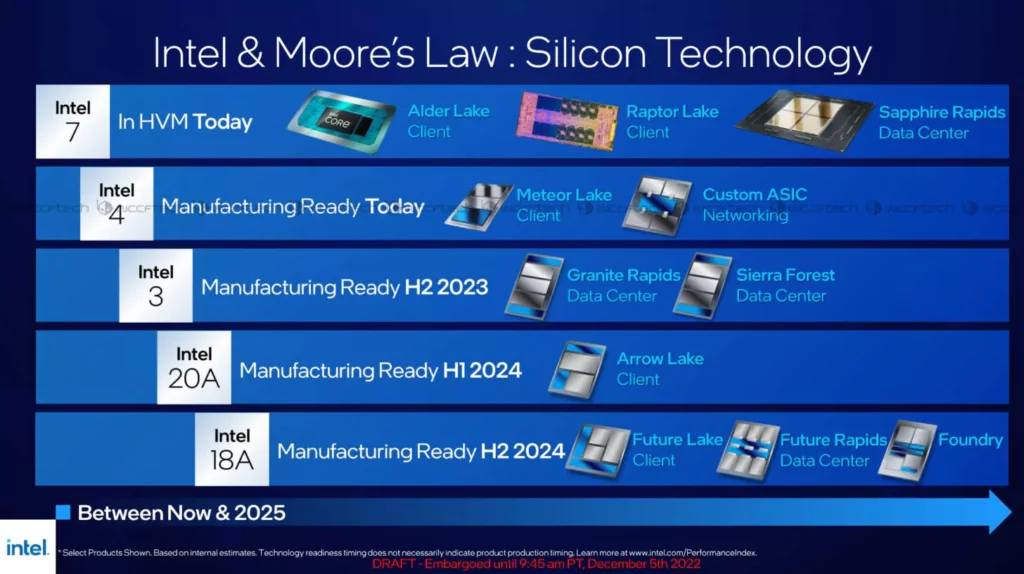The Angstrom era is about to begin, and Intel’s latest roadmap demonstrates that the corporation is working at a ‘torrid pace’ to not only stay on schedule but also to accelerate the delivery timeline. As shrinking silicon battles an avalanche of physical quantum effects, it becomes increasingly difficult to shrink nodes, which is where the post-nanometer era comes into play.
An angstrom, which is a nanometer divided into ten slices, will be the word of choice for process nodes smaller than 2 nm (or 20 Angstroms) and will be the first few processes (likely 18A) to debut with ASML’s high-NA EUV devices. More intriguingly, it appears that Intel is really ahead of schedule.
Intel has released another roadmap that compiles previously available public information and affirmed that its forthcoming 4nm process is manufacturing-ready.

It’s worth noting that the procedures where the corporation says the nodes are “manufacturing ready” match the schedule for risk production. This signifies that Intel 4 is currently in risk production. Extrapolating from this, it is possible that Meteor Lake will not be delayed as some reports have suggested, and will instead launch in 2023, rather than 2024, as the business had initially anticipated.
In any case, Intel has also stated that the 18A process (which is expected to be based on ASML’s high-NA EUV lithographic technology) will enter risk production by the second half of 2024. However, the most significant technological leap in the near future will occur with 20A, which will introduce RibbonFET and PowerVias at the same time.
RibbonFET is a gate-all-around or nanosheet transistor architecture that, like FinFETs, should extend the duration of Moore’s Law. This will be integrated with PowerVia backside power delivery, which is overseen by Ann B Kelleher, the company’s General Manager of Technology Development.
Also Read:








